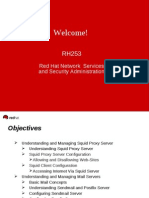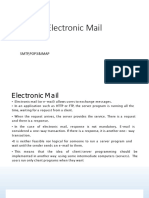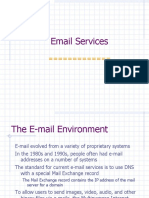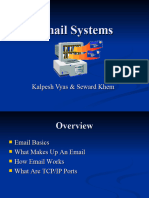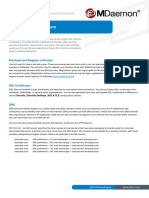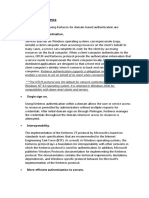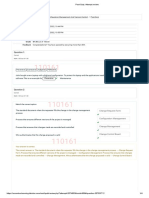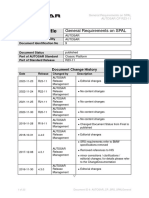0% found this document useful (0 votes)
45 views48 pagesChapter 2 Campus Area Network Server Configurations
The document discusses mail servers and how email works, defining mail server agents like MUA, MTA, and MDA, and describing how an email is sent from a sender to a recipient by passing through various mail servers over a network using protocols like SMTP, POP3, and IMAP.
Uploaded by
NURRUL ISMAILCopyright
© © All Rights Reserved
We take content rights seriously. If you suspect this is your content, claim it here.
Available Formats
Download as PPT, PDF, TXT or read online on Scribd
0% found this document useful (0 votes)
45 views48 pagesChapter 2 Campus Area Network Server Configurations
The document discusses mail servers and how email works, defining mail server agents like MUA, MTA, and MDA, and describing how an email is sent from a sender to a recipient by passing through various mail servers over a network using protocols like SMTP, POP3, and IMAP.
Uploaded by
NURRUL ISMAILCopyright
© © All Rights Reserved
We take content rights seriously. If you suspect this is your content, claim it here.
Available Formats
Download as PPT, PDF, TXT or read online on Scribd
/ 48









